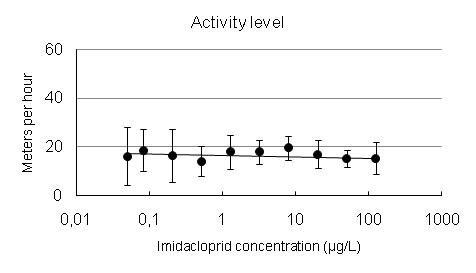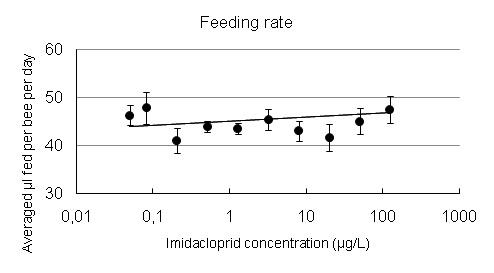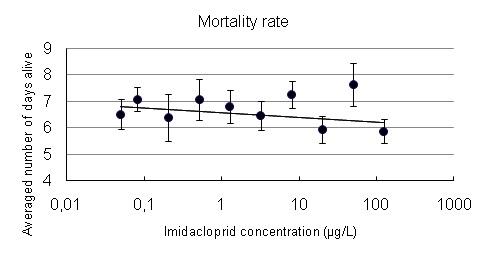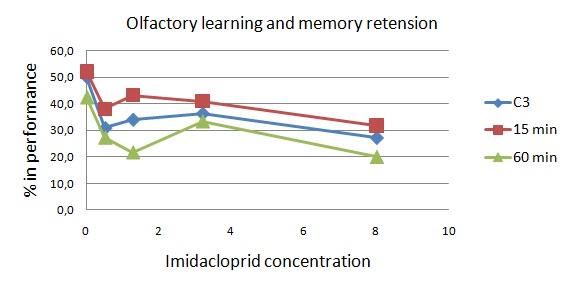Activity levels, feeding rate and mortality
The activity level did not differ between the control bees and bees given different doses of imidaclopird. The individuals given different doses of imidacloprid did not show a higher or lower activity pattern compared to the control bees. The bees given the highest dose of imidacloprid (125 µg/L), did not show any difference in activity level compared to the control bees.

The feeding rate between control bees and bees given the pesticide, were not significantly different. Bees given the doses 0.082 µg/L and 125 µg/L had the highest feeding rate but it was not significantly higher compared to the control bees.

No significant difference was found in mortality rate between control bees and bees given imidacloprid. The individuals given the highest dose of imidacloprid (125 µg/L) lived approximately for six days, which was the lowest number of days lived. The control bees lived one day longer compared to the bees given the highest dose.

Olfactory learning and memory
There were significant difference between control bees and bees given different doses of imidacloprid in the last conditioning trial (C3) and the two memory retention tests (15min,60min). The decrease in performance was found for all doses of imidacloprid tested ( 0.512 µg/L, 1.28 µg/L, 3.2 µg/L, 8 µg/L), The bees given the highest dose of imidacloprid (8µg/l) had the poorest performance on all three tests. Overall, imidacloprid do affect the honeybees’ olfactory learning and memory formation.

Responsible for this page:
Director of undergraduate studies Biology
Last updated:
05/18/11
